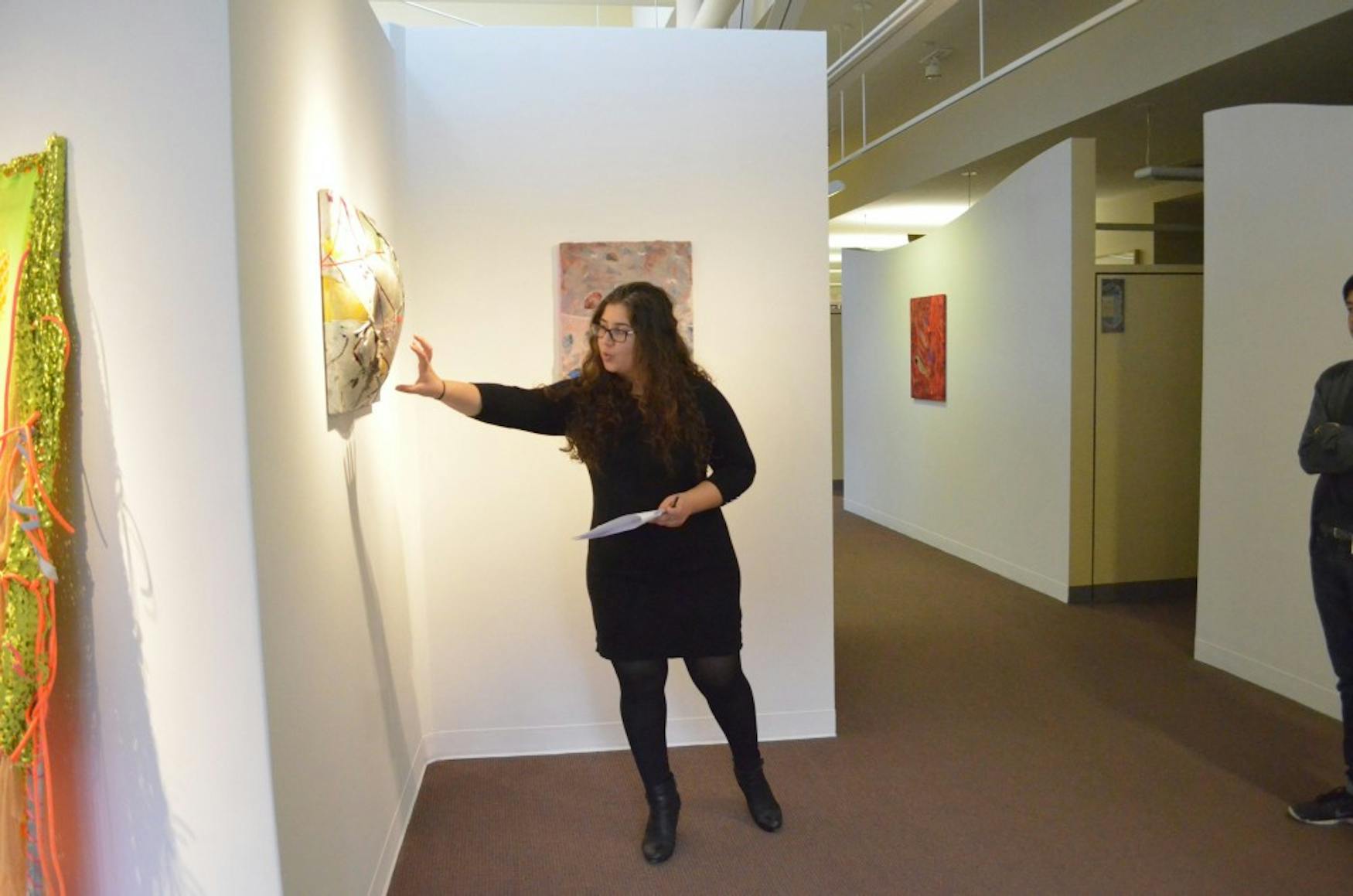Talk focuses on interactions of medicine and art
What do medicine and art have in common?—Leeza Meksin’s exhibit Big Bounce at the Women’s Studies Research Center. On Wednesday, Damiana Andonova ’15, who is also the arts assistant at the WSRC, hosted and led an interactive discussion at the WSRC that explored how the field of medical humanities unites art and medicine. She used four of the Big Bounce pieces displayed in the WSRC to promote discussion on the topic, allowing attendants to actively share their thoughts and feelings.
Although attendance was sparse at “Art and Observation: A Medical Humanities Tour,” Andonova managed to lead an interesting discussion and was assisted by Curator and Director of the Arts Susan Metrican and Director of the Women’s Studies Research Center Shulamit Reinharz. Andonova wrote in an email to the Justice that she “found instant connections to the body and surgery while working to set up the exhibit.” Andonova decided to host the event after Metrican asked her “to involve Brandeis students more into the arts at the WSRC,” she explained. “The idea for this event was actually very experimental, and the idea for the event at Brandeis just kind of developed simultaneously while preparing for [Big Bounce],” she said.
In her description of the event, Andonova talks about the medical humanities as an intervention against the “modern-day technocratic medical system” to bring back the “art of reading a body—of physical diagnosis and patient-physician relationships.” According to Andonova’s definition, medical humanities is the “application of the humanities to the study of medicine,” as well as applying it to medical education. By looking at Meksin’s work, Andonova explains that it allows viewers to think critically about how art informs the science of medicine.
Both Reinharz and Metrican contributed insights as the small group explored the relationship between the spandex art and medicine. The event started by discussing art and its relationship to the body—especially spandex as a skin-like material that wraps around objects, enveloping the body. The event also brought up the debate if doctors should touch patients and how connected a patient should feel to a physician.
The discussion continued with a look at one of the exhibit pieces where attendants were encouraged to actually touch the art while it was discussed. This particular piece, titled “Sitting Holy,” was rectangular and segmented into two sections that puffed out like a pillow. The top layer of spandex was marred with oval-shaped rips that revealed the bottom layer, which one individual described as a semi-permeable layer. Reinharz shared her interpretation of the piece, commenting that the holes don’t spread despite being ripped just as a human body can be full of “holes” but still be okay.
The next piece, titled “Rawwwd,” looked much dirtier and more disassembled than the previous piece, appearing to be disjointedly held together and splattered with paint. Andonova started by describing what she saw and pointed out the intentional bulges and random objects stuffed inside the spandex layers. She said it reminded her of violence and surgeries she had seen. One attendant said he felt the need to close it up and fix the damage. Metrican, however, saw humor in the artwork, like the bulges created on the body when wearing tight clothing. Reinharz also responded, wondering if the piece could represent a botched surgery that left the body disfigured. She also added that there might be medical uses for spandex that have yet to be discovered.
The third piece looked even more like the human body, with a belly button-like indentation in the spandex. The gray spandex base was covered in colorful paint splotches and tightly-laced strings that crisscrossed the canvas. The group interpreted these strings as both bonding stitches and a constraining corset. Reinharz interpreted the piece as “what our bodies really look like ... held together, pieced together” and not always pretty.
“Fupalicious,” the last piece was much simpler than many of the works. The square shape and solid gold color resemble something like a couch cushion, which, Metrican explained, prompts a thought of furniture’s relationship to the body. However, she also said the piece resembles the lower torso and pelvic area of the body, which gives the piece a hint of sexuality, yet remains rather androgynous.
Most apparent in the entire discussion were the different interpretations every individual had of the art and its relation to the body. The ability to touch the art in this particular exhibit—which attendees gladly did—produced an enhanced experience, allowing for the sense of touch, not just sight. Like the human body and skin, touch is a complex sensation that Meksin incorporates into her work. By encouraging dialogue and analytical thought, Andonova made the relationship between medicine and art, something people often overlook, a very accessible and reflective experience.
Reinharz offered a concluding thought on the exhibit, stating, “It doesn’t take much, when looking at art, to think of a new idea.”



Please note All comments are eligible for publication in The Justice.